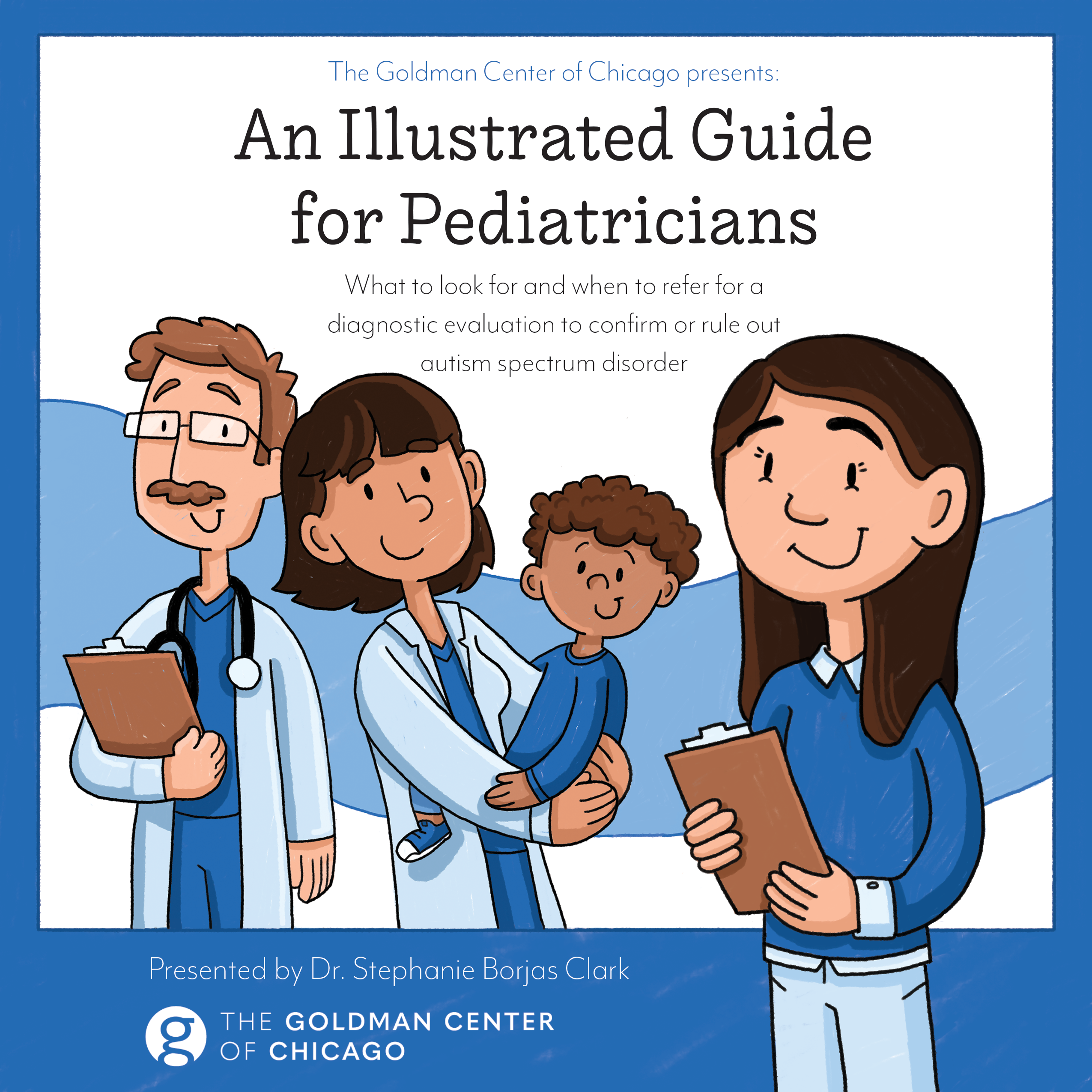As pediatricians, you play a crucial role in the early identification of developmental disorders, including Autism Spectrum Disorder (ASD). Early diagnosis and intervention can significantly impact a child’s developmental trajectory, improving social, behavioral, and communicative outcomes. This illustrated guide aims to provide you with a comprehensive understanding of the key signs of autism and practical advice on when to refer a child for a diagnostic evaluation.
Why Early Identification of Autism Matters
Autism Spectrum Disorder affects how children communicate, interact with others, and process sensory information. Identifying and diagnosing autism as early as possible allows families to access appropriate services and therapies. Early intervention programs, such as speech therapy, occupational therapy, and behavioral therapies, have shown to be most effective during the critical early stages of brain development.
While ASD can be reliably diagnosed as early as 18 months, some children may not receive a formal diagnosis until much later. Your ability to recognize early signs and initiate the referral process is vital in closing this gap.
Early Signs of Autism: What to Look For
ASD is a spectrum, meaning its symptoms can vary significantly from child to child. However, pediatricians should be vigilant about identifying common developmental and behavioral signs that may indicate the need for further evaluation.
1. Delayed or Atypical Communication Development
- Limited speech or language delays: By 12-15 months, a child typically starts babbling and using single words. If a child isn’t meeting these milestones or shows a significant delay, it can be a red flag.
- Lack of nonverbal communication: Autism often impacts nonverbal cues, such as a child’s inability to make eye contact, point to objects, or use gestures like waving.
- Echolalia: Some children with ASD may repeat words or phrases without understanding their meaning.
- Difficulty with social reciprocity: A child may not respond to their name, smile back, or engage in reciprocal play like “peek-a-boo.”
2. Repetitive Behaviors and Restricted Interests
- Repetitive movements: Watch for hand-flapping, spinning, rocking, or other repetitive physical motions.
- Fixated interests: Some children with autism display an intense focus on specific objects, routines, or topics, to the exclusion of other activities.
- Unusual sensory responses: Children with ASD may have heightened or reduced responses to sensory stimuli. This may include extreme reactions to loud noises, lights, textures, or tastes.
3. Social Interaction Difficulties
- Limited interest in peer interactions: A child may prefer to play alone rather than engage with other children.
- Difficulty understanding emotions: Children with ASD may struggle to recognize or respond to the emotions of others, appearing indifferent to social cues.
- Challenges with pretend play: Play that involves imagination, role-playing, or shared experiences may be absent or minimal.
4. Developmental Regression
- Loss of skills: Some children with ASD exhibit a loss of previously acquired social, language, or motor skills. This is often most noticeable between 15 and 24 months of age.
When to Refer for a Diagnostic Evaluation
It is important to balance observation with proactive decision-making. While developmental differences don’t always indicate autism, it’s essential to refer for a diagnostic evaluation if certain signs or behaviors raise concern. Below are situations when a referral should be strongly considered:
1. Consistent Red Flags for ASD
- If you observe multiple indicators of autism, especially in the domains of communication, behavior, and social interaction, a diagnostic evaluation is warranted.
- Use standardized screening tools such as the Modified Checklist for Autism in Toddlers (M-CHAT) to assess the need for referral.
2. Failure to Meet Developmental Milestones
- If a child is not meeting basic language, social, or motor milestones by expected ages, this can be a sign of developmental delays that warrant further evaluation.
- Delays in babbling, gesturing by 12 months, speaking single words by 16 months, or using two-word phrases by 24 months should prompt concern.
3. Parental Concerns
- Take parents’ concerns seriously, even if the child appears to be developing typically in some areas. Many parents are the first to notice unusual behaviors or developmental differences.
- If a parent reports concerns about their child’s social, communication, or behavioral development, it’s critical to listen and consider a referral for evaluation.
4. Regression of Skills
- Immediate referral is essential if a child experiences a noticeable regression in language, social skills, or other developmental areas. This is often an early indicator of ASD.
Referral Process: What to Expect
After identifying concerning behaviors or developmental delays, a referral for a diagnostic evaluation should be made. Here’s what you can expect:
- Multidisciplinary Evaluation: The evaluation is typically conducted by a team of specialists, including developmental pediatricians, child psychologists, speech-language pathologists, and occupational therapists.
- Standardized Assessments: Tools such as the Autism Diagnostic Observation Schedule (ADOS) and Autism Diagnostic Interview-Revised (ADI-R) are commonly used to assess a child’s behavior and development.
- Parental Input: Parents will play a crucial role in providing a detailed history of their child’s development, behaviors, and interactions.
Collaborating with Families After the Diagnosis
If a child is diagnosed with ASD, your continued involvement is essential. You can guide families through the next steps:
- Discuss Treatment Options: Explain the importance of early intervention services and help connect families with local resources, including behavioral therapy, speech therapy, and occupational therapy.
- Provide Support: A diagnosis of autism can be overwhelming for parents. Offer emotional support and answer any questions they may have about treatment, therapies, or long-term planning.
- Regular Follow-ups: Ensure regular check-ins with the child and family to monitor progress and adapt the treatment plan as needed.
The Pediatrician’s Role in Early Autism Diagnosis
Pediatricians are often the first point of contact for parents who have concerns about their child’s development. Your expertise and proactive approach can make a world of difference in ensuring children with autism receive the support they need. Recognizing the signs, knowing when to refer for a diagnostic evaluation, and working closely with families are all critical components of your role in promoting better outcomes for children with ASD.
By staying informed and utilizing this guide as a resource, you can feel confident in your ability to help children with autism spectrum disorder access timely diagnoses and effective interventions.
Conclusion
Autism Spectrum Disorder is a complex developmental disorder, but early detection can make a significant impact on a child’s future. As a pediatrician, your role in recognizing early signs and making timely referrals for diagnostic evaluations is essential in ensuring children receive the interventions they need. Keep this guide handy as a quick reference, and remember, collaboration with families and specialists can lead to life-changing outcomes for children on the autism spectrum.






